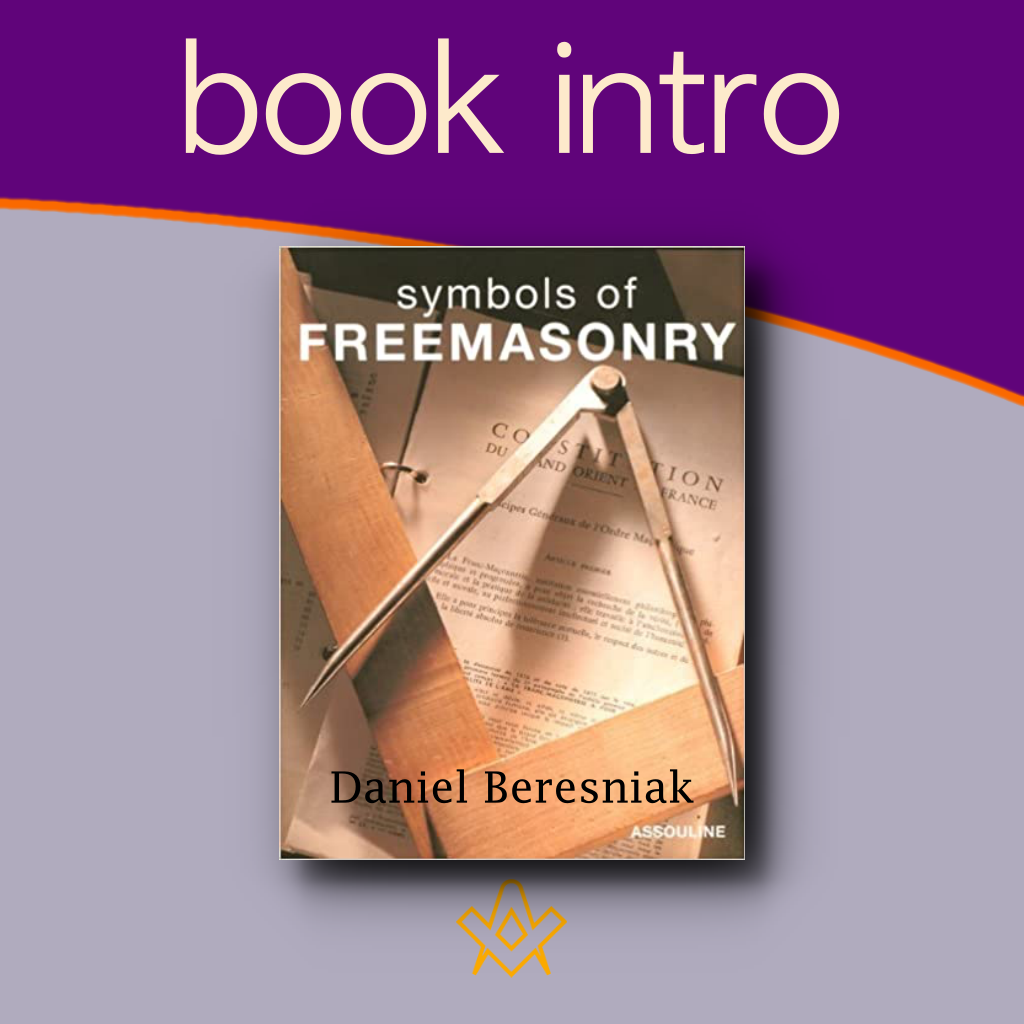Freemasonry is one of mankind’s oldest existing secular brotherhoods.
Its past members include kings, presidents, military leaders, writers and philosophers, and today there are over ten million freemasons in the world.
The power of their network is often feared, and yet freemasonry is not a closed doctrine. Members of the same lodge do not share the same political or religious opinions.
So what do freemasons share? What can their masonic experience bring to others? This book gives the reader a clear response to these questions by means of an exploration of freemasonry through the moral, philosophical or religious symbols which lie at the heart of its teaching: from the Masonic calendar to Solomon’s Temple, the stonemason’s tools, and special clothing, customs and rituals.
Richly illustrated, Symbols of Freemasonry is designed both for the initiated and newcomers interested in gaining a better understanding of this fascinating but often misrepresented society.
SYMBOLS OF
FREEMASONRY
DANIEL BERESNIAK
Freemasons prosper in all free countries and wherever there is law and order. They are victimised and persecuted in all states governed by the whims of an autocratic ruler or a single party, and in places where all truth is considered to be found in a single book which is raised on a pedestal, a fixed monument.
In the city, that teeming mass of isolated people inhabiting today’s urban sprawls, the Masonic lodge is a place where people can come together in a spirit of fraternal joy.
The Rule, rites and symbols, allow every person to become themselves: to discover that they are all makers of meaning; to recognise themselves and others as sources of light adding to the general light, while accepting that no one of these single flames can shed light everywhere.
Masonic teaching is known as “The Royal Art”, a term which used to be applied to alchemy.
Many books exist on this subject, but they are generally so strange and difficult to understand as to infuriate any reader who is unused to going beyond the literal meaning of things.
However, there are two aspects of the Royal Art—the tradition from which Freemasons draw most of their symbols— which should encourage us to examine it more closely.
The first reveals its central role in the history of human behaviour. Whenever an all embracing orthodoxy has the power to exclude or kill those who have doubts or ask questions, whenever the pressure to conform is so heavily imposed that dissenters are threatened with death, free spirits have always found the means of sharing and spreading their ideas. This may involve veiling them in allegory or wrapping them up in thick layers of lies and absurdity.
The second aspect, which leads on from the first, places the Royal Art firmly within the history of ideas. Even today, all the metaphors which allude to the act of becoming, and which we still now use to describe reality, derive from the vocabulary of alchemy. The act of becoming is a metamorphosis.
A metamorphosis takes place during a journey through different landscapes, among forms and colours, during which each of us is transformed. But, in this context, the term has intentionally been trivialised into the act of putting on a costume and playing a role.
Those who undertake this adventure come out of it with varying rewards, depending on the landscape they visit, their approach, what they make of it and how much of it they see.
A journey of initiation is not a package tour. There are no sign-posts. The risk of becoming lost, of sliding back when attempting to go forwards, is what gives life to the unexpected.
The intertwining of danger and promise creates the possibility of understanding and allows the idea of freedom to be considered a moral value.
What Freemasons have to offer is the notion of a society created around the union of diversity; the opposite of a union of conformity.
This book is a collection of the symbolic images which Freemasons encounter on their journeys of transformation.’
The texts and illustrations form an intimate dialogue whose subject is Freemasonry, and which casts light on the relationship between dreams and reality, reason, intuition and imagination.
Anyone who delves into the history of ideas must ask themselves questions about the connections between current ideologies and traditional, timeless representations of the world.
Such questions inevitably lead to a study of the symbols of Freemasonry, to watching Freemasons live with these symbols and myths, and to listening to them debate the subject.
They are delighted not to all have the same opinions, for debate is vital to a culture. Freemasonry is indeed a culture and, like all cultures, is a living fire where answers fuel new questions.
The way in which Freemasonry uses symbolism gives us an insight into the word itself. Masonic symbolism is based on the notion of building: building, becoming and making.
“To make” is understood as “to make something of oneself”. This approach forges a relationship between the physical roads we walk along in the city on our way home and the spiritual paths which in each of us lead between our desires and our thoughts.
Freemasons delve into myths in order to understand how the human mind works, with a view to becoming free people, which is to say, people who act rather than react.
During their journeys, they cast aside their layman’s rags in order to don their costume of light and live out different roles.
In this way Freemasons are able to experience a reality which is often denied to or simply ignored by those people bound by the prejudices and certitudes of current, fashionable philosophies. Imagination and reason feed off each other even, and perhaps especially, when they are opposed.
Freemasonry’s symbols are a part of our culture and of our lives, in the spiritual, intellectual and ethical realms as well as in our ordinary daily routines.
Note: This work is a translation of a text written by a French Mason. Some of the content is peculiar to France and will not be known to other Masons. Nevertheless, the basic principles described and explained are common to Freemasonry wherever it is practiced throughout the world.
Recent Articles: in this series
 Book Intro: The Secret Doctrine Explore the profound synthesis of science, religion, and philosophy in H.P. Blavatsky's "The Secret Doctrine." Discover the true depth of Theosophy beyond the oversimplified term "Esoteric Buddhism" and uncover the universal wisdom that transcends religious boundaries. A compelling introduction to Theosophical literature and its broader, esoteric truths. |
 Book Intro - The craftsman and freemason's guide Dive into the enigmatic world of Freemasonry with Cornelius Moore's comprehensive guide. Uncover the symbolic rituals, trace the fraternity's historical roots, and gain a deeper understanding of this age-old society. Perfect for Freemasons and curious readers alike. Unlock the secrets of Freemasonry today! |
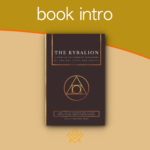 Unravel the secrets of the ancient Egyptian wisdom with our comprehensive guide to the Kybalion, by Three Initiates. Discover its influence on modern thought, the controversies surrounding it, and its seven profound Hermetic principles. Unlock the power of these timeless teachings to transform your understanding of life's mysteries. |
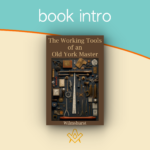 Book Intro - The Working Tools of an Old York Master by Wilmshurst Unlock the Secrets of Freemasonry! Dive into the profound symbolism of 'The Working Tools of an Old York Master.' Discover the hidden meanings behind the square, compass, plumb line, and more. Embark on a transformative journey of personal growth and spiritual enlightenment. Uncover the ancient wisdom that has shaped generations of Masons. |
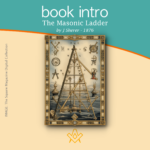 Book Intro - The Masonic Ladder by J Sherer Unlock the mysteries of Freemasonry with "The Masonic Ladder" by J. Sherer - - 1876. This 19th-century guidebook takes readers on a journey through the steps of the Masonic ladder, from the basic principles of the Entered Apprentice to the highest degree of the Sovereign Grand Inspector General. Discover the symbolism, allegory, and values of Freemasonry in this timeless classic. |
 Book Intro - The London mason in the seventeenth century The London Mason in the Seventeenth Century by Douglas Knoop offers a comprehensive examination of the lives and work of masons in the bustling city of London during the seventeenth century. The book delves into the intricacies of their craft, the socioeconomic and political forces that influenced their profession, and the role they played in shaping the architectural landscape of London. |
 Book Intro - History of Freemasonry, Gould, Robert Freke The History of Freemasonry is a comprehensive overview of the origins, development, and evolution of Freemasonry from its ancient roots to the modern era. The book explores the fascinating history of one of the oldest and most mysterious organisations in the world, which has been the subject of much speculation and curiosity over the centuries. - by Robert Freke Gould |
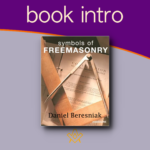 Book Intro - Daniel Beresniak Symbols Of Freemasonry This book is a collection of the symbolic images which Freemasons encounter on their journeys of transformation.' The texts and illustrations form an intimate dialogue whose subject is Freemasonry, and which casts light on the relationship between dreams and reality, reason, intuition and imagination. |
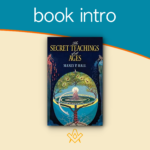 Book Intro - The Secret Teachings of All Ages by Manly P Hall The Secret Teachings of All Ages by Manly P Hall is a comprehensive and in-depth exploration of the various esoteric and occult traditions that have shaped human history. The book covers a wide range of subjects including alchemy, astrology, mysticism, and secret societies, and provides detailed explanations of the underlying principles and concepts. |
 Book Intro - Duncan's Masonic Ritual and Monitor Duncan's Masonic Ritual and Monitor is an impression of the Old York Rite published in New York in 1866. |
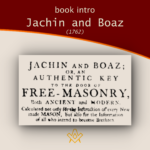 Book Intro - Jachin and Boaz (1762) Thirty two years after Samuel Prichard's Masonry Dissected (1730) a second detailed exposure was published Jachin and Boaz (1762) attributed to the same author, and met with equal distain by Freemasons of the time. However, these exposures offer the masonic historian an invaluable view in to how freemasonry was conducted during its early formation |
 Book Intro - Three Distinct Knocks (c.1760) Giving an exact account of all their proceedings in making a brother, with the three obligations or oaths belonging to the first second, and third degrees of masonry, viz. The entered apprentice, fellow-craft, and master-mason: with the obligating on belonging to the chair, and the grip and word. |
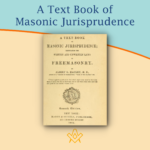 Book Intro - A Text Book of Masonic Jurisprudence An introduction to Albert Mackey's seminal work on Masonic Jurisprudence – the theory or philosophy of Masonic law. The Foundations of Masonic Law are to be found in the Landmarks, or Unwritten Law, and in the Ancient Constitutions, or the Written Law. These constitute the subject matter of the book. |
 Book Intro - The Perfect Ceremonies Of Craft Masonry 1871 A beautiful example of a the rituals, produced in a Medieval illuminated script style. Facsimiles still exist of this illustrated ritual book, of which the most authentically produced version is that available from the Scottish Rite Masonic Book Club. |
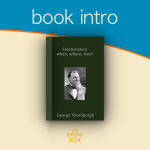 Book Intro – Freemasonry; when, where, how? Introduction to Freemasonry; when, where, how? By George Thornburgh |
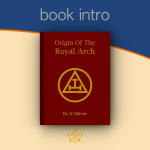 Book Intro - Origin Of The Royal Arch An introduction to the Origin of the Royal Arch, through the eyes of the English nineteenth century masonic author Dr G Oliver (1782–1867) |
 Book Intro – Symbolical Masonry Symbolical Masonry is a treasure-house of Masonic lore, including discussions of key concepts of the first three degrees, along with an extensive study guide. |
 This month we look at – 'A portrait gallery, with biographical sketches of prominent freemasons throughout the United States' |
 Extracted and abridged from The Mystic Tie: Or, Facts and Opinions, Illustrative of the Character and Tendency of Freemasonry By Albert Mackey, |
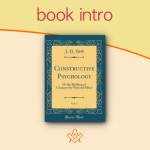 Book intro - Constructive Psychology The introduction to Constructive Psychology or The Building Of Character By Personal Effort by J D Buck a masonic author |
 book intro - Cagliostro: the splendour and misery of a master of magic Preface to the book by William Rutherford Hayes; Cagliostro: the splendour and misery of a master of magic |
 book intro - Origin of the Rosicrucians and the Free-Masons Historico-Critical Inquiry into the Origin of the Rosicrucians and the Free-Masons – Thomas De Quincey |
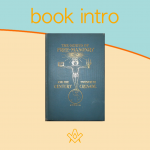 Book Intro - The Genius of Freemasonry The Genius of Freemasonry: “Has any brother anything to offer for the good of Masonry?” The following pages are the author’s answer to that question. |
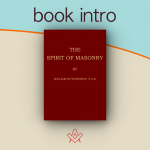 Book Intro - The Spirit of Masonry An essential source for anyone interested in exploring the inner mysteries of the Masonic Fraternity. |
 Book intro - History of Freemasonry Introduction to a classic masonic book by J. G. Findel, History of Freemasonry published 1866 |
 The Book of Constitutions for the Ancient Grand Lodge or Ahiman Rezon |
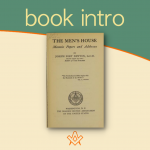 A short introduction to The Men's House, a collection of masonic papers and addresses |
 This is a general survey of Masonic origins, history and philosophy. It was at one time given to every new Mason in Iowa. |
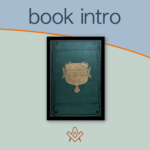 Book Intro - The Discrepancies of Freemasonry Written almost 150 years ago, this book contains wisdom still relevant today. |
 Book Intro - The Principles of Masonic Law "The first great duty, not only of every lodge, but of every Mason, is to see that the landmarks of the Order shall never be impaired". |
 Published in 1911, this fascinating book is equally relevant for the 21st century Mason with an interest in the more mystical side of Freemasonry. |
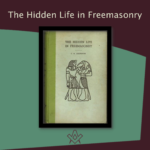 Book Intro - Hidden Life of Freemasonry Introduction to The Hidden Life in Freemasonry (1926) by Charles Webster Leadbeater |
 Book Intro - The Symbolism of Freemasonry Introduction to a classic masonic book; The Symbolism of Freemasonry: Illustrating and Explaining Its Science and Philosophy, its Legends, Myths and Symbols. |
 Book Intro - The Meaning of Masonry This is the Introduction to The Meaning of Masonry, a set of essays which discuss the esoteric side of Masonry |
 Book Intro - Illustrations of Masonry Introduction to Illustrations Of Masonry by William Preston (1742-1818) |
masonic knowledge
to be a better citizen of the world
share the square with two brothers

click image to open email app on mobile device
